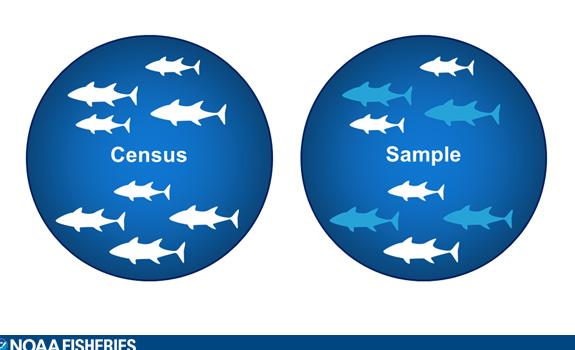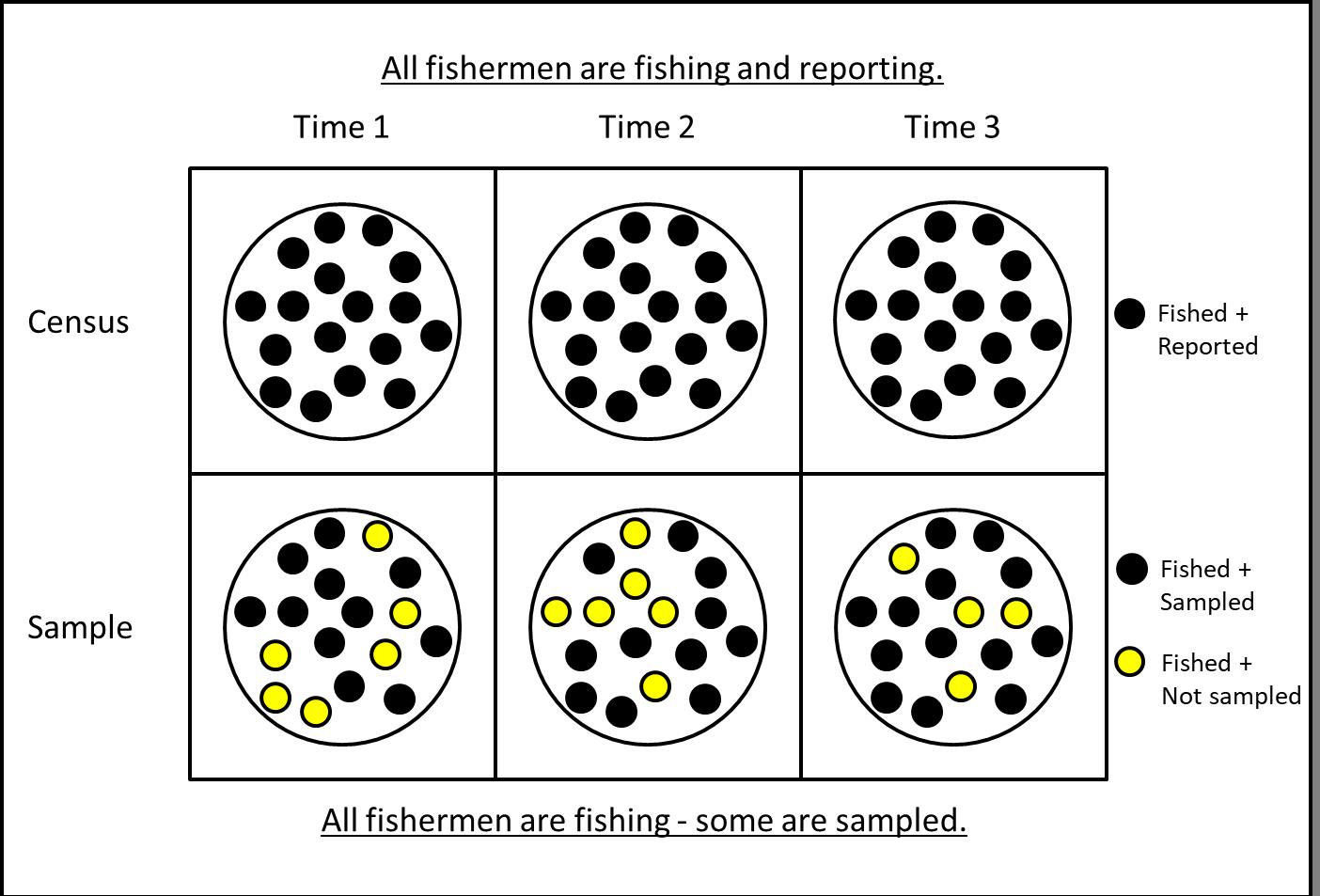
2 minute read
Science and Management 101 Collecting Data from Fishermen - Census vs. Sample
Data collection is the backbone of fisheries management in the Western Pacific Region. Fishery managers need information about:
- the total amount of fish caught
Advertisement
- the amount of time spent fishing
- the number of fishers harvesting various fish species (i.e., the “universe” of a local fishery)
With this data, they can make well-informed decisions about introducing new guidelines to ensure the sustainability of fish populations, or relaxing regulations to allow fishers more flexibility while fishing. Generally, there are two main approaches to collecting vital fishing data—censuses and sampling.
CENSUS – collects information from every member of a target group, which is only possible when the entire group is known. An example of a census is the Hawai‘i commercial fishing license and mandatory reporting system. A commercial fishing license defines how many fishermen there are, while mandatory reporting defines the portion that is actively fishing.
SAMPLE – collects information from a randomly selected and typical portion of a target group that reflects the characteristics of the larger group. Sampling is used when conducting a census is not practical. The smaller sub-sampled population is estimated to represent the whole population, with certain assumptions, like a survey design is closely followed. An example of a sampling design is a creel (angler) survey that collects intermittent catch and effort data from returning fishers at select locations.
While sampling may generally be used more often than censuses due to practicality, there can often be sampling errors and/or uncertainties that impact the overall estimates. Thus, censuses are usually preferred to sampling when complete data are required. However, sampling designs are still used in cases where censuses cannot be utilized, including for estimating total fishing activity and harvest.

fisheries.noaa.gov/recreational-fishing-data/survey-statistics-overview
In an ideal scenario, the data collection agencies are able to identify all of the fishermen participating in the fishery and everyone reports how long they fish and what they catch (top row). This requires a fully enforced system of licensing and reporting.

However, things are not always ideal. The reality is some parts of the population are not fishing all the time, and not everyone is reporting. Conducting a proper sampling design efficiently captures these situations. Notice that the two rows in the illustration are similar. Both collect the same information with varying levels of assumptions and reporting.

In American Samoa, Guam and the Northern Mariana Islands, mandatory fishery licensing and reporting regulations are either not yet in place, or not fully enforced. Voluntary creel surveys have been implemented, as described above. Sampling may capture only a part of the fishing community, but it is the most realistic option due to limited resources in the island areas.
Data limitations can lead to an inaccurate picture of fish populations. The Western Pacific Fishery Management Council has supported a fishery data collection app in the territories called Catchit Logit to put the power of data into the hands of fishermen. Better data means better management for a sustainable fishery.









